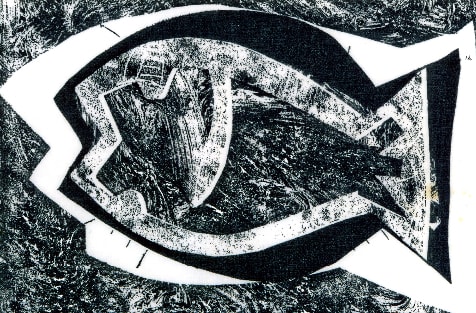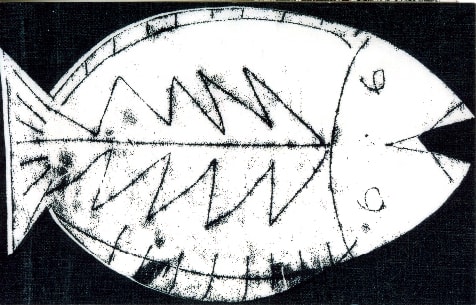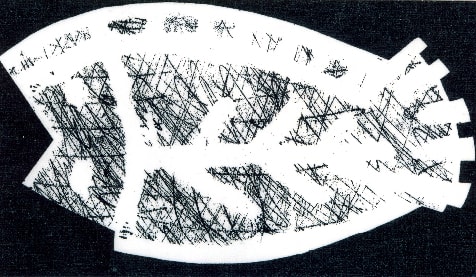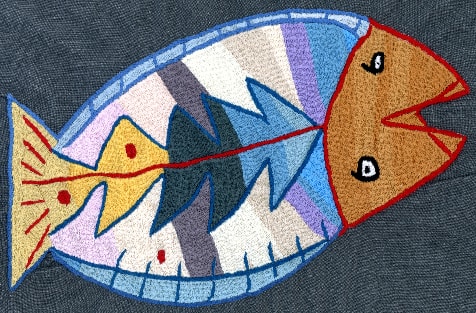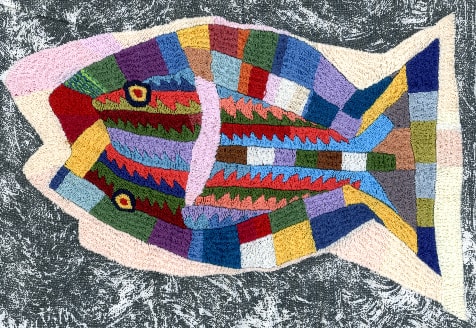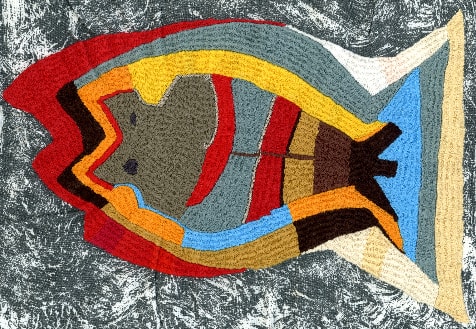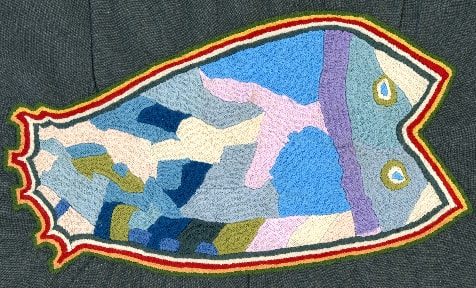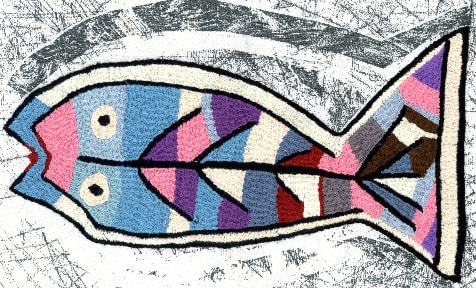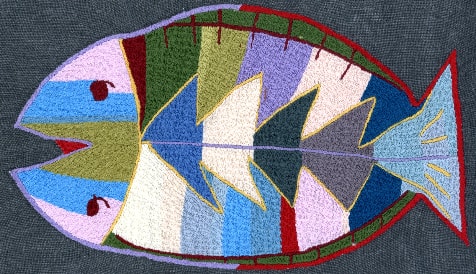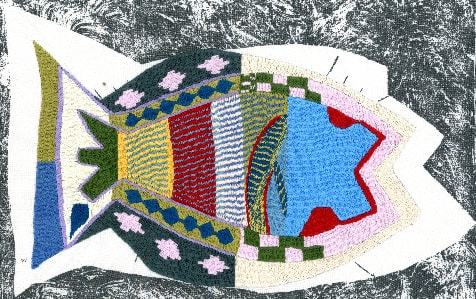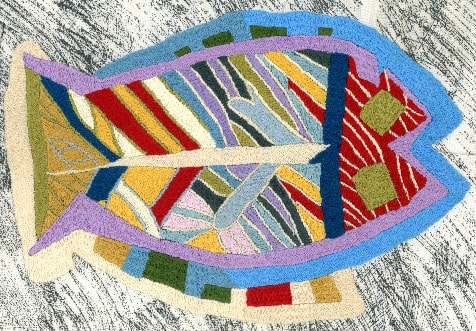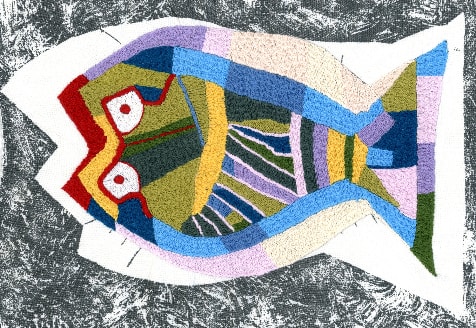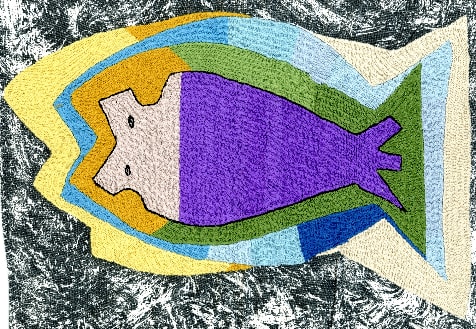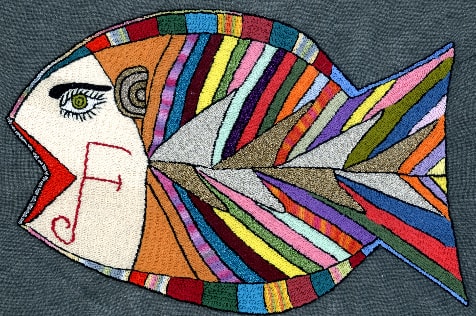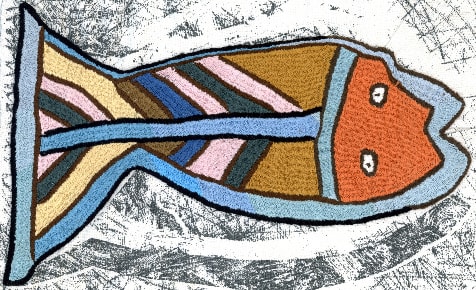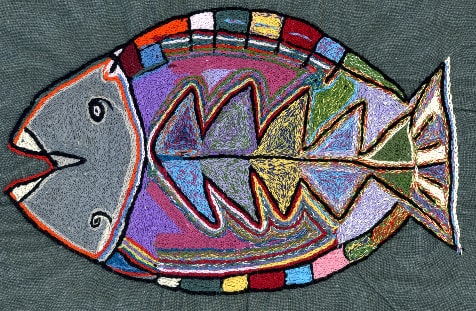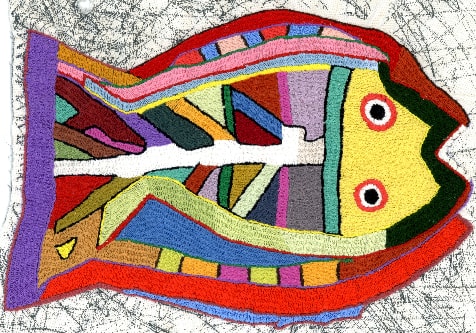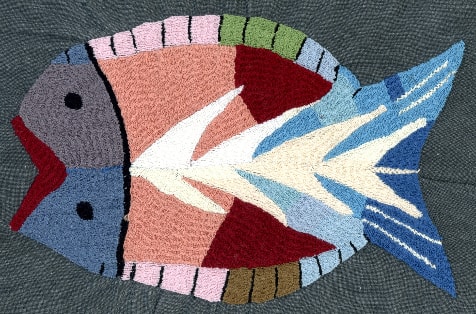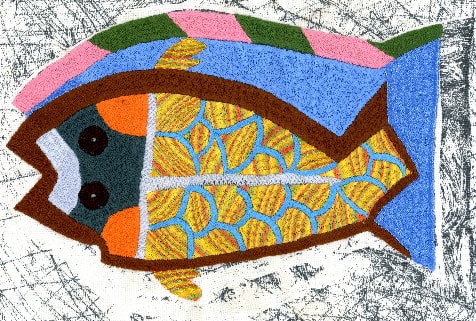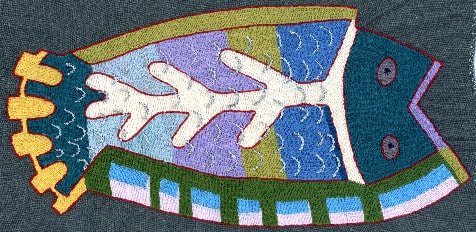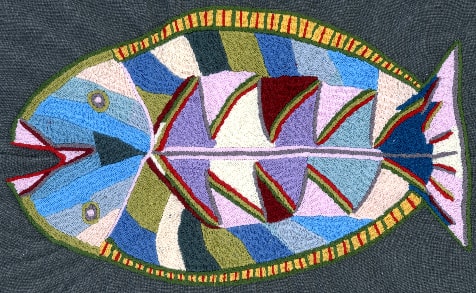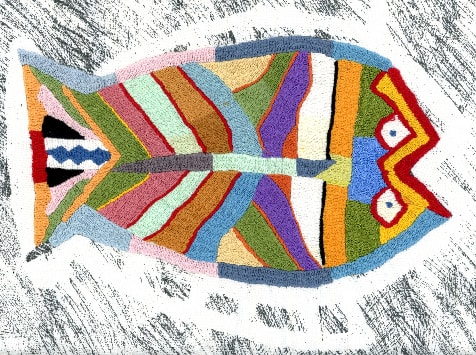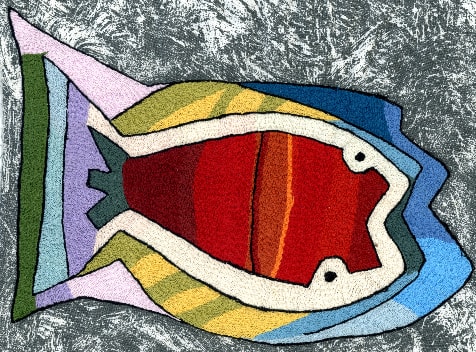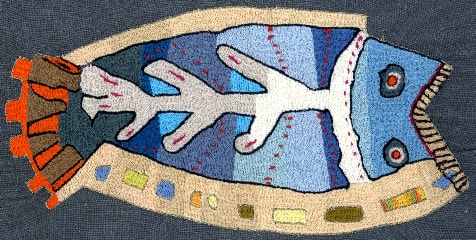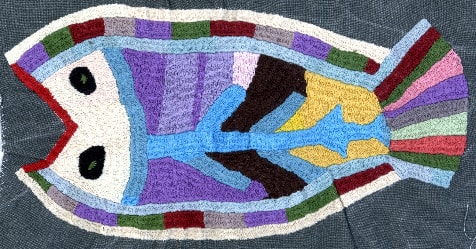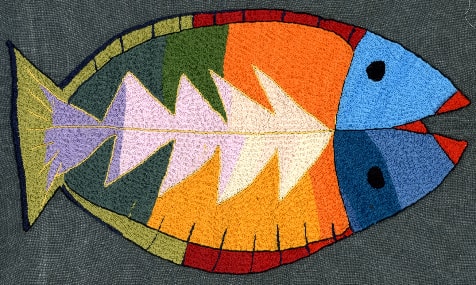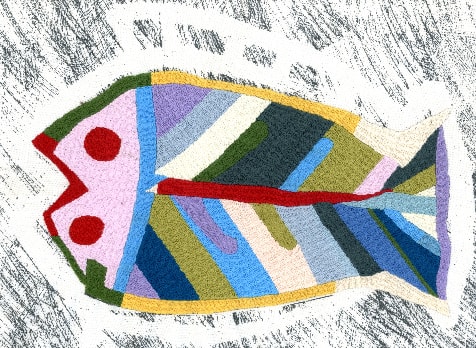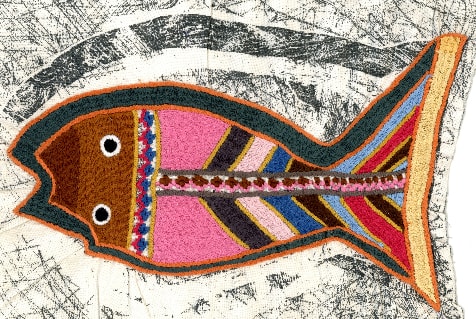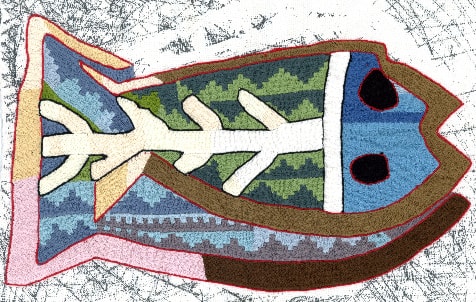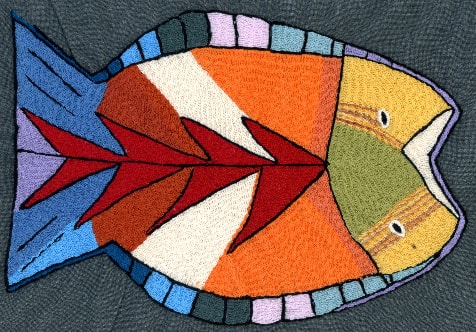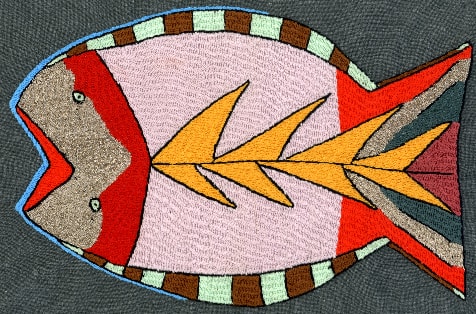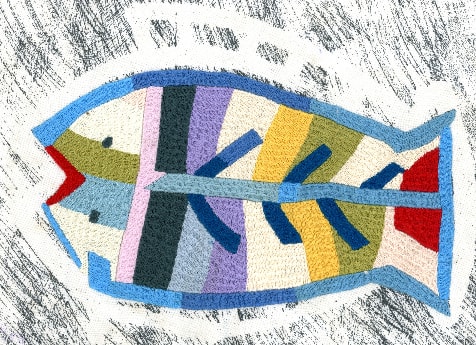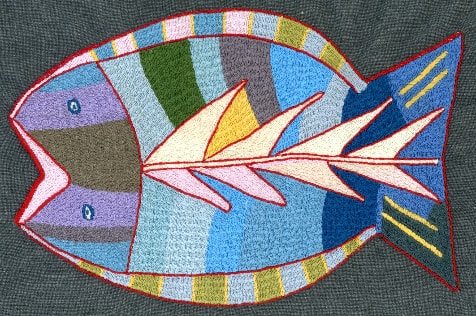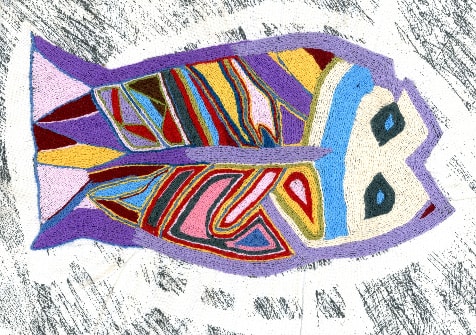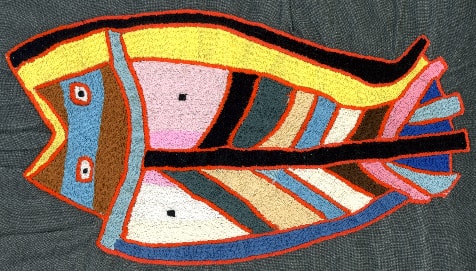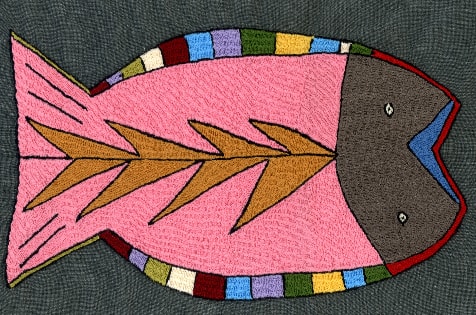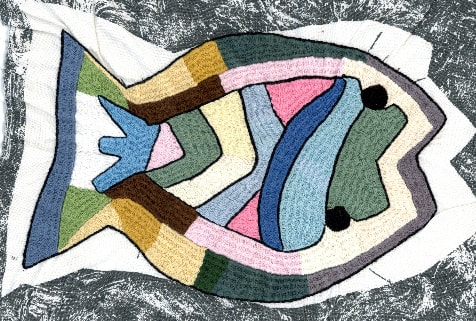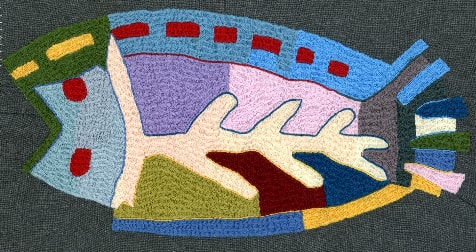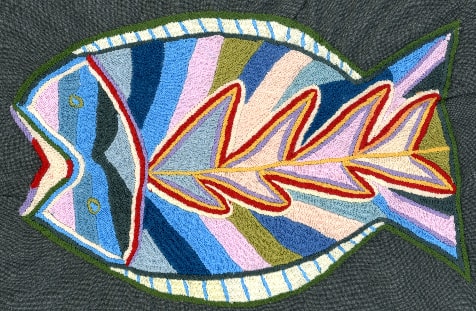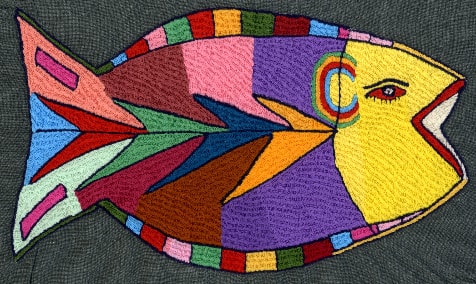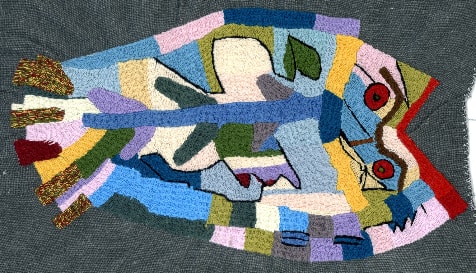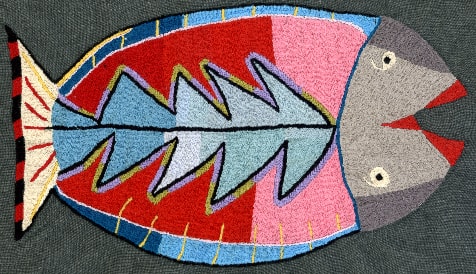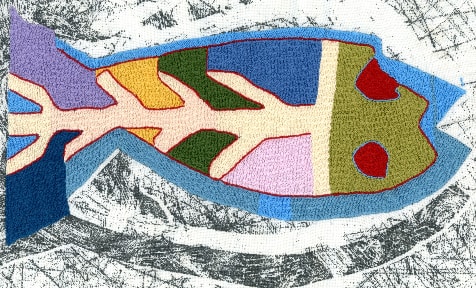Colourful fishes
An exhibition, this time produced by the Afghan women themselves.
The “fish project” which is shown here ought to be mentioned in a special report, but the arrangement of the many fish is simply so beautiful and has turned out that well that we would like to present them to you here like in an exhibition. One could wish swimming in an exhibition in their midst …
How did this “fish project” come about?
In 2012 I got a big piece of cloth as a present which had served as a curtain before. On it there were printed three different fish motives like on a grid which looked like a drawing. The fabric was ideal for embroidery. Nearly 60 fish could be made from it, each on an area of about DIN-A4-seize.
In Freiburg embroidery yarn was prepared for each piece of fabric, a range of five different colours, the same for each, but in terms of quantity just that much, that contours and details of fish could be embroidered. The embroidered area should add up to one single square more or less (circa 17m embroidery yarn).
In October 2012 the fish together with the embroidery yarns were distributed in the village of Qala-e-kona, one fish for one embroiderer.
What they should do was explained to them as follows:
“There won’t be enough yarn to embroider the fish completely. Please, use these threads only and use them up. No further yarns should be added. Cover the given area, keeping within the limits. The motives can be chosen freely within this area.“
What were the results after three months?
You can analyse the results: all kinds of colourful fish! Which were the five colours that had been specified? It can no longer be identified. And moreover: all fish were completely embroidered.
What had happened?
My guess is: the embroiderers are used to embroider the complete area.
I’m sure that traditionally they they didn’t work like this, but due to our project they have learned it. They don’t listen carefully when something new is requested. Fearing that they might do something wrong, they prefer choosing familiar practices.
The women in the villages are educated according to Afghan tradition, they grow with their new tasks, but it’s hardly possible for them to make their own decisions and to perform tasks independently. They were willing to take up this extra work because it was a little job only and they had the possibility of making some extra money.
There were questions like: What should I embroider on the area and how much and where? Probably they weren’t able to cope with all this. It was easier for them to embroider the motive completely. This way – in their opinion – there wasn’t really much that could go wrong. Additionally, more space was provided and since the money they get depends on the area they embroider, this would also mean getting higher wages. (Actually, they got as much money as if they had embroidered two or three squares). Whether it was a woman’s idea who then infected all the others, or whether it was a joint decision – we don’t know.
Of course, they didn’t have enough embroidery yarns, which wasn’t any problem for them because everybody has some remaining yarns from previous projects.
The result of the experiment has turned out different than we had expected. We accept it the way it comes. It’s a great fortune that the women enjoy a large degree of freedom with this project. From time to time we are disappointed with the results, but we also experience wonderful surprises – as with these fish which we hadn’t expected in this form. But now we are very impressed with the works and we consider them as beautiful and especially creative.
The fish series is not for sale for the time being.


